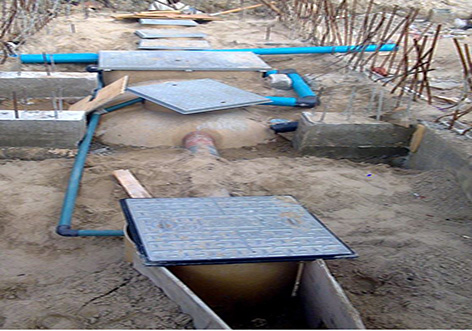
The working principle of a sewage treatment plant
Domestic sewage treatment plants typically comprise of one or two chambers and utilize aeration to break down solids. After aeration, the remaining solids, including microorganisms, settle to the bottom of the tank to treat the next batch of wastewater. This is commonly known as activated sludge.
Large scale sewage treatment plants work by employing numerous physical, chemical, and biological treatment processes. A typical sewage treatment plant, in most cases, will first employ preliminary treatment involving screens and/or grit chambers to remove larger and heavier, often inert organic matter. This is followed by primary settlement tanks to remove less dense solid matter.
The water that leaves these processes is expected to be particle-free and fed to a biological treatment stage where high-density bacterial populations degrade the carbon and nutrients from the water.
It should be noted that a septic tank can only partially treat wastewater, it is not a complete sewage treatment plant.
How does sewage get to the treatment plant?
Much like a septic tank, wastewater enters a sewage treatment plant via an inlet, either via gravity (i.e. used water is flowing directly to the treatment plant from the property), or under pressure (i.e. wastewater is collected in a chamber and a pump is used to direct the wastewater to the tank). The latter is mainly used when there is no depth alignment between the pipework of the premises/assets served by the plant and the treatment plant itself.
What is tertiary wastewater treatment?
Tertiary wastewater treatment, often referred to as “effluent polishing”, is primarily used in environmentally sensitive areas. It utilises a combination of physical and chemical processes to remove harmful microbiological contaminants from wastewater. In some cases, the tertiary wastewater treatment process also includes additional disinfection steps to ensure that the quality of treated wastewater meets the regulatory standards before discharging to groundwater.
The tertiary wastewater treatment process typically involves filtration using a specific material. Some of the most common filtration systems include sand-beds and coconut husk – a fully natural, renewable and compostable filtering medium.

